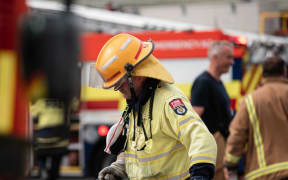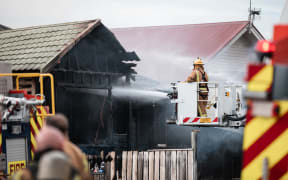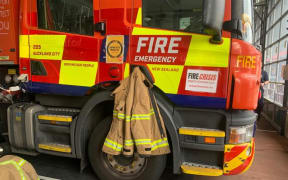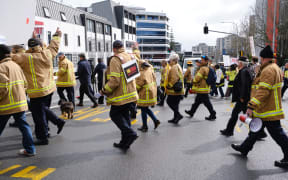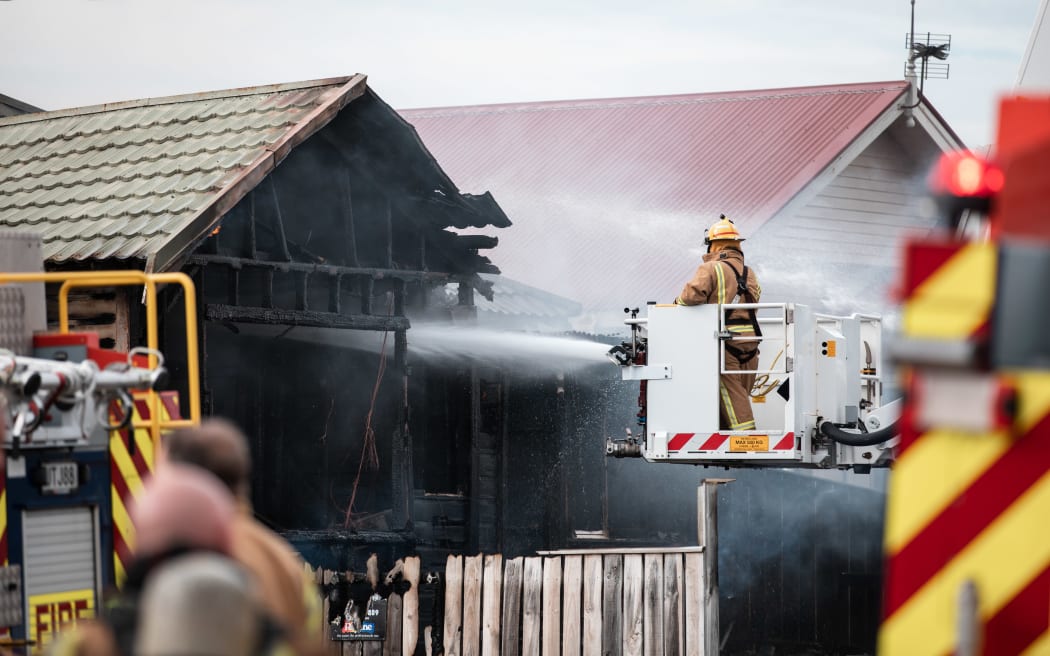
The Newtown aerial truck 225 was blacklisted by firefighters after it froze up while tackling a raging fire in Kilbirnie in February this year. Photo: RNZ / Samuel Rillstone
Firefighters have lifted a ban on a big fire truck that keeps breaking down - the last time at a burning house.
But the sorry saga of Newtown aerial truck 225 has exposed basic holes in the way the country's emergency responder fleet is run.
The truck has been blacklisted since freezing up with a firefighter in the ladder cage at a raging house blaze in Wellington in February - just one day after the truck broke down at the fire station.
Fire investigator and Professional Firefighters' Union vice president Joe Stanley had earlier accused Fire and Emergency of kicking him off the investigation to cover up systemic problems with its fault-tracking systems.
He was reinstated after RNZ interviewed him back in May.
Stanley told RNZ yesterday the truck was the "canary in the mine" for fleet management failings.
"That [truck] hasn't been on the run for a very long time," he said.
"Very few times it's been out of the station in the last couple of years.
"So this has become, I suppose, the flagship for the issues that we have with vehicle maintenance. It was this appliance that we're using as our test case."
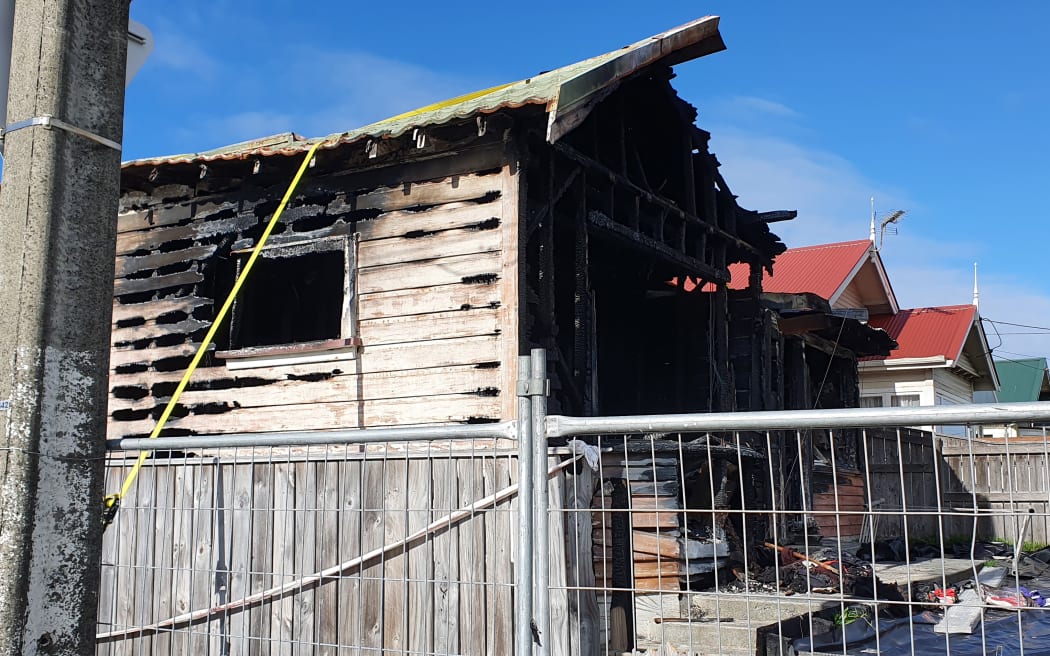
The burnt-out house in Kilbirnie where the aerial fire truck broke down in February. Photo: RNZ / Phil Pennington
But now they had a "breakthrough", in getting FENZ's agreement on what the problems with the whole system were, he said.
FENZ had previously insisted its fleet management was fine.
But the investigators found it is hotchpotch - for instance, stations did not know about a document for recording the severity of faults.
"Regions and districts ... have developed their own procedures in the absence of national level guidance," it said.
Huge sums of money were tied up in aerials, but the faultfinding system was still paper-based and needed software to run it.
Their report also faulted what FENZ had done about past investigations: They simply could not find out the outcome, after the same truck froze up in 2017.
FENZ said it had accepted all seven of the investigators' recommendations.
This is "a very good and useful report", it told RNZ.
The recommendations centred on fixing its system for tracking faults and maintaining the aerial truck fleet, and improving training.
The three-person investigation team found the maintenance schedule might be OK for a regular vehicle but was not up to looking after aerials where just 1mm of wear on a sensor pad can freeze up a whole ladder.
"Think about the capability - it has a huge capability of being able to reach 10 storeys in the air," Joe Stanley said.
"You'd want it to be as safe and for those sensors to work as effectively as possible, but one millimetre is the difference between it working and not working."
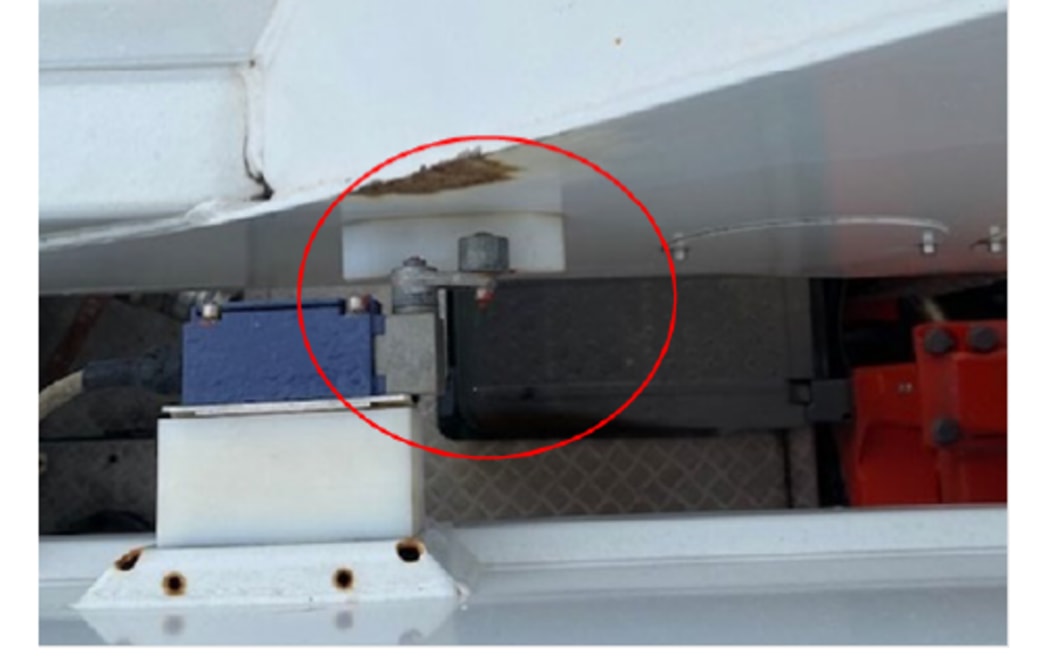
A worn sensor on the ladder boom is circled; the ladder failed during tests by the investigators, who concluded 1-2mm of wear on the sensor's nylon plate was enough to freeze it up. Photo: Supplied / FENZ
'No way of knowing'
It was just as well he was reinstated to the investigation as it had begun pursuing "red herrings" around if the firefighters that day were to blame, when they weren't, he said.
"The key was that when something went wrong, there was no way of knowing who knew about it.
"And whether the people that were supposed to fix it had actually fixed it."
The report's recommendations have had immediate effect - the Newtown truck is back in use, though for a few weeks it will be for training only to ensure it is OK.
On the wider front, they are aiming to fix the lack of fault finding over the next six months.
"When we raise issues with life-saving appliances, we don't know whether those issues have been resolved," Stanley said.
"That's why we've worked so hard around this appliance.
"We looked deeply into the issues which were a lack of service and maintenance strategy for these types of appliances, an inability for operators to highlight faults effectively, and to have those faults resolved, and holes in the training programmes."
The recommendations FENZ had agreed on would benefit the whole aerial fleet, he said.
FENZ region manager Bruce Stubbs said everyone had "worked together in a constructive and open way to get to the bottom of what happened".
"This has resulted in a comprehensive report which will help us all learn and improve operations."
The report said there was no risk to safety at the Kilbirnie freeze, since the truck was safely parked and its hose was able to deploy a "water curtain" to block the heat.
It found:
- FENZ's aerial fault logbook does not allow for faults to be clearly defined, categorised, prioritised and rapidly communicated.
- A lack of any process for impounding a vehicle.
- Weekly truck checks are "inconsistent" across regions and may not align to manufacturer guidelines.
- Training must be more regular and in-depth.
- Tensions between FENZ's fleet management and firefighters got in the way.
"Challenges with trust and transparency exist between parts of the organisation," the report said.
Its seventh recommendation revolved around responses to investigations.
"Fire and Emergency New Zealand should review how it manages and resources the completion of recommendations from past Level 2 Investigations.
"This investigation has raised questions over the ownership and implementation of recommendations between directorates, and the level of inter-organisational co-operation."

